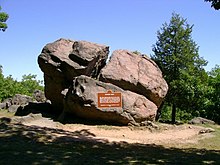
Quick Facts
Biography
William Goffe (1605?–1679?) was an English Roundhead politician and soldier, perhaps best known for his role in the execution of King Charles I and later flight to America.
Early life
He was son of Stephen Goffe, puritan rector of Bramber in Sussex, and brother of Stephen Goffe (Gough), royalist agent. His father was deprived of his living in 1605 for his part in organising the puritan petitions to James I. He began life as an apprentice to a London salter, a zealous parliamentarian. Goffe was a man of religious feeling, nicknamed "Praying William".
By his marriage with Frances, daughter of General Edward Whalley, he became connected with Oliver Cromwell's family and one of his most faithful followers. He was imprisoned in 1642 for his share in the petition to give control of the militia to the parliament.
Civil War years
On the outbreak of the English Civil War he joined the army and became captain in Colonel Harley's regiment of the New Model Army in 1645.
He was a member of the deputation which on 6 July 1647 brought up the charge against the eleven Presbyterian members. In late 1647 Goffe played a prominent part in the famous debates of the army council at Putney. The contemporary record of the debates clearly reveals his religious and political radicalism. He was active in bringing King Charles I to trial and signed the death warrant. In 1649, he received an honorary M.A. at Oxford.
He distinguished himself at the Battle of Dunbar, commanding a regiment there and at the Battle of Worcester in 1651.
Major-general
He assisted in the expulsion of Barebone's Parliament in 1653 and took an active part in the suppression of Penruddock's rising in the west country of July 1655. In October 1655 during the Rule of the Major-Generals was appointed major-general for Berkshire, Sussex and Hampshire. Meanwhile, he had been elected member for Yarmouth in Norfolk in the parliament of 1654 and for Hampshire in that of 1656. He encouraged the Hampshire justices of the peace to suppress unlicensed alehouses in their county, and attempted to curtail the evangelising activities of itinerant Quaker preachers, towards whom he was extremely hostile. He supported the proposal to bestow a royal title upon Oliver Cromwell, who greatly esteemed him, and was included in the newly constituted Upper House. He obtained Lambert's place as major-general of the Foot and was even thought of as a fit successor to Oliver Cromwell.
As a member of the committee of nine appointed in June 1658 on public affairs, he was witness to the Protector's appointment of Richard Cromwell as his successor. He supported the latter during his brief tenure of power and his fall involved his own loss of influence. In November 1659 he took part in the futile mission sent by the offices of the London cabal of the New Model Army to General George Monck, the English military governor of Scotland.
In New England

In 1660, during the Restoration, he escaped with his father-in-law, General Edward Whalley, to Massachusetts. They landed in Boston on 27 July 1660, and settled in Cambridge. When the news arrived in Boston, on the last day of November, that the act of indemnity passed by parliament in August excepted them from its provisions, the government of the colony began to be uneasy, and a meeting of the council was held on 22 February 1661 to consult as to their security.
Four days later, the two fled for New Haven, Connecticut, arriving on 7 March 1661. There John Dixwell, also condemned as a regicide, was living under an assumed name. They were housed by Rev. John Davenport. After a reward was offered for their arrest, they pretended to flee to New York City, but instead returned by a roundabout way to New Haven. In May, the Royal order for their arrest reached Boston, and was sent by the Governor to William Leete, Governor of the New Haven Colony, residing at Guilford. Leete delayed the King's messengers, allowing Goffe and Whalley to disappear. They spent much of the summer in Judges' Cave at West Rock.
Letters to Dr. Increase Mather and others give hints as to Goffe's whereabouts, but very little is clear, perhaps due to his desire not to be captured and executed. He appears to have passed the rest of his life in exile in New England, separated from his wife and children, under one or more assumed names.
Tradition has him sheltering for a decade in the home of Rev. John Russell at Hadley, Massachusetts, reappearing, according to legend, to lead the town's defence during King Philip's War, giving rise to the legend of the Angel of Hadley. Another traditional account has him later living in Stow, Massachusetts, where his sister resided, dying in Stow, and being buried in the Stow Lower Cemetery under an unmarked granite slab.
The three regicides are commemorated by three intersecting streets in New Haven ("Dixwell Avenue", "Whalley Avenue", and "Goffe Street"), and in some neighbouring Connecticut towns as well.
